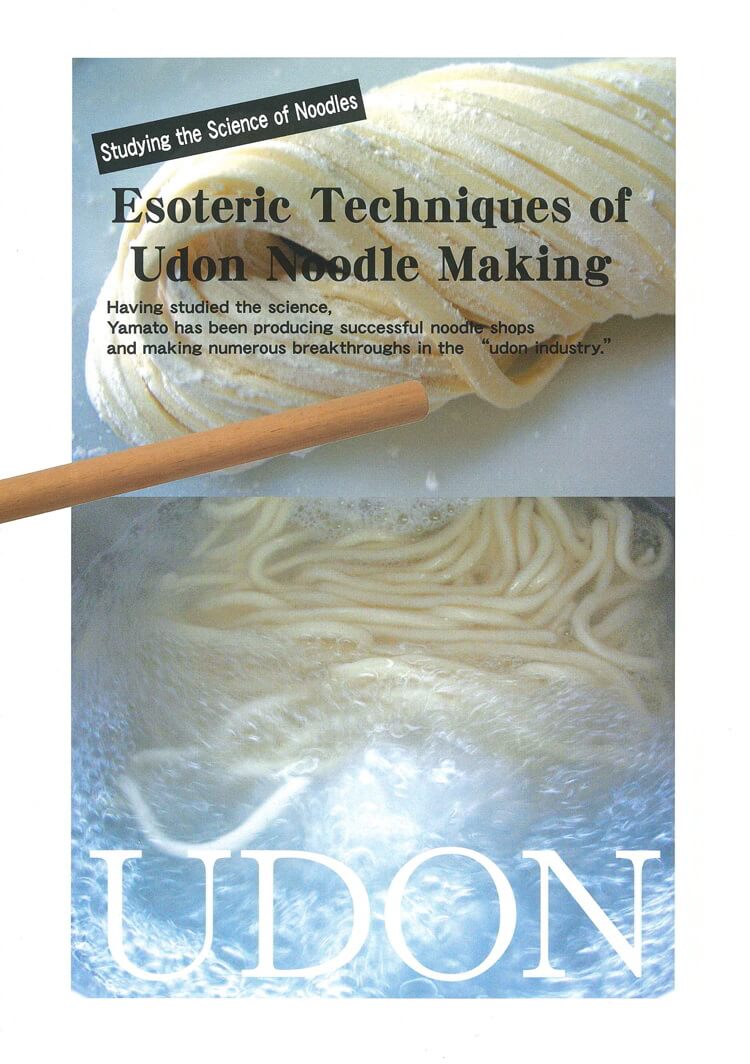本書より抜粋:
History of Udon in Japan
According to “Ryono Gige” (practical guide of ordinances put together in the 8th century) and “Wamyo-rui Jusho” (dictionary compiled during Heian period), kona, the Chinese character meaning flour, referred to ground up grains of rice and men, the character currently used for noodles, referred to pulverized wheat berries. In ancient times, men originally referred to the primary ingredient wheat. However, it eventually became the generic term for long strips of the dough made from wheat. Although there are various theories, togashi (to= Tang Dynasty, gashi= sweets) imported by a Japanese envoy to China during the Tang Dynasty, such as sakubeim houtou and wonton. The name is generally thought to have evolved from wonton, which changed to undon and eventually became Udon.
Although the ingredients had changed depending on the era, the noodles were all hand-pulled at that time. Sakubei evolved into sakumen and finally became somen and udon. The kneaded dough was cut in to strands and then stretched over two sticks to wrap them in a twisting motion. Houtou was made by boiling the dough after it had been rolled out and cut into squares or formed into thumb-nail sized balls and then flattened. The hand-pulling method used in making sakubei and the techniques of flattening the dough by hand or the method of cutting rolled out dough to make houtou now provides the basis of udon making.
ご購入は下記よりご連絡いただいた後、お支払いの案内をお送りします
お支払い方法は代金引換となります。書籍本体価格に加え、送料・代引き手数料が必要となります。
海外へ発送の場合は、発送先によって送料が異なりますのでお問合せください。開封後の返品はお断りしております。ご了承ください。

